In the eighties many companies tried to compete in the growing home computer market with one or more products. Some companies made history, other had a niche following, some others didn’t succeed or were successful in a few countries only.
The PHC-25 was released in Japan in 1982 and sold worldwide in 1983, but there’s very little information about it, so it probably wasn’t very successful – even Wikipedia just features a one-line description and the bare technical details of the machine. The French site phc25.com has more information about it. Since I got this computer in a lot of items I bought from eBay France in spring 2015, and all the photographs on google have the “ordinateur individuel” sticker, I can deduce that the PHC-25 had a small following in that nation. In the US, the PHC series was presented to the public at the 1983 Winter CES in Las Vegas [1] at the price of $264 [2].
The PHC-25 is the most powerful in a family of three models released by Sanyo, the other two being the PHC-10 and the PHC-20. Based on a Z80A compatible processor, when turned on the computer asks which graphic screen mode to use for the session; the available RAM depends on that choice.
Here are the top and rear views of the computer:
To reduce the size of the computer, the motherboard is split in two layers, connected by a flat cable.
As you can see in the teardown view, the keyboard is quite simple – just the keys and the rubber pads.
Sadly the computer stopped working just before publishing the article, so I couldn’t take a last picture of the machine turned on and connected to a TV. I will ask a friend to lend me a hand to repair it in the next few months.
[1] InfoWorld magazine, 31 january 1983
[2] Collectible Microcomputers by Michael Nadeau, 2002
Discover more from Oldcomputr.com
Subscribe to get the latest posts sent to your email.
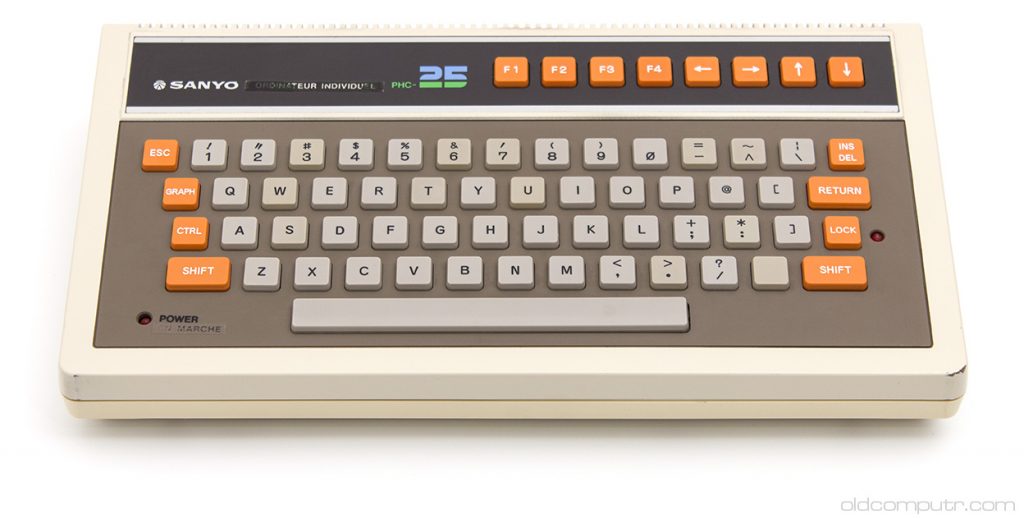
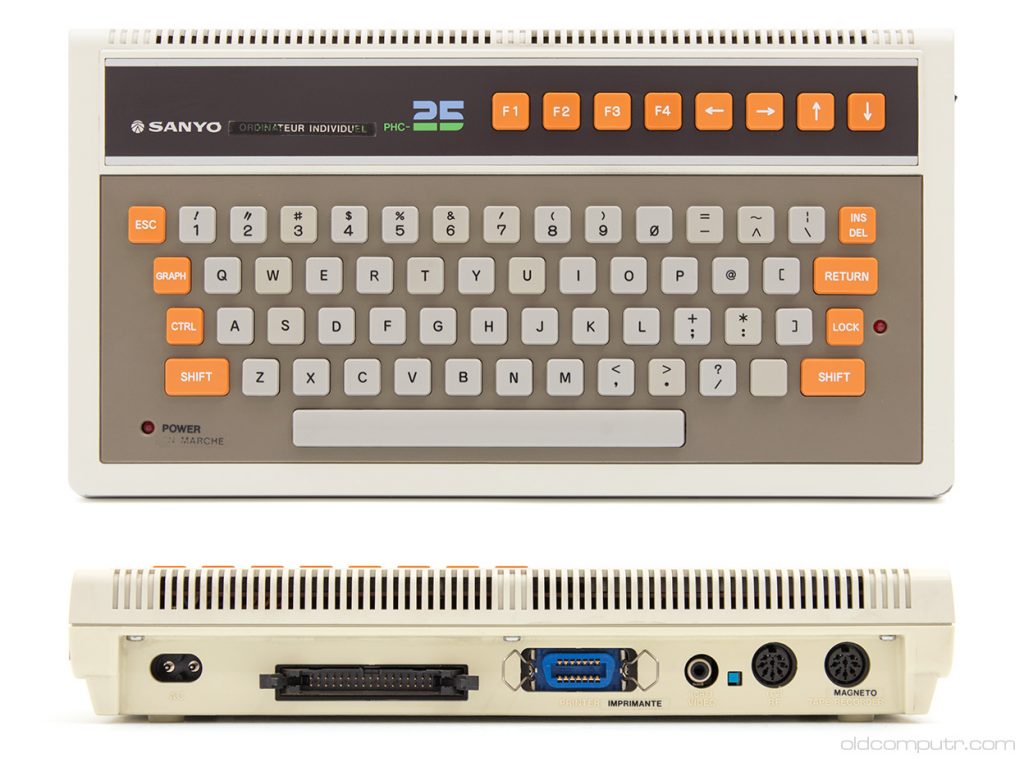
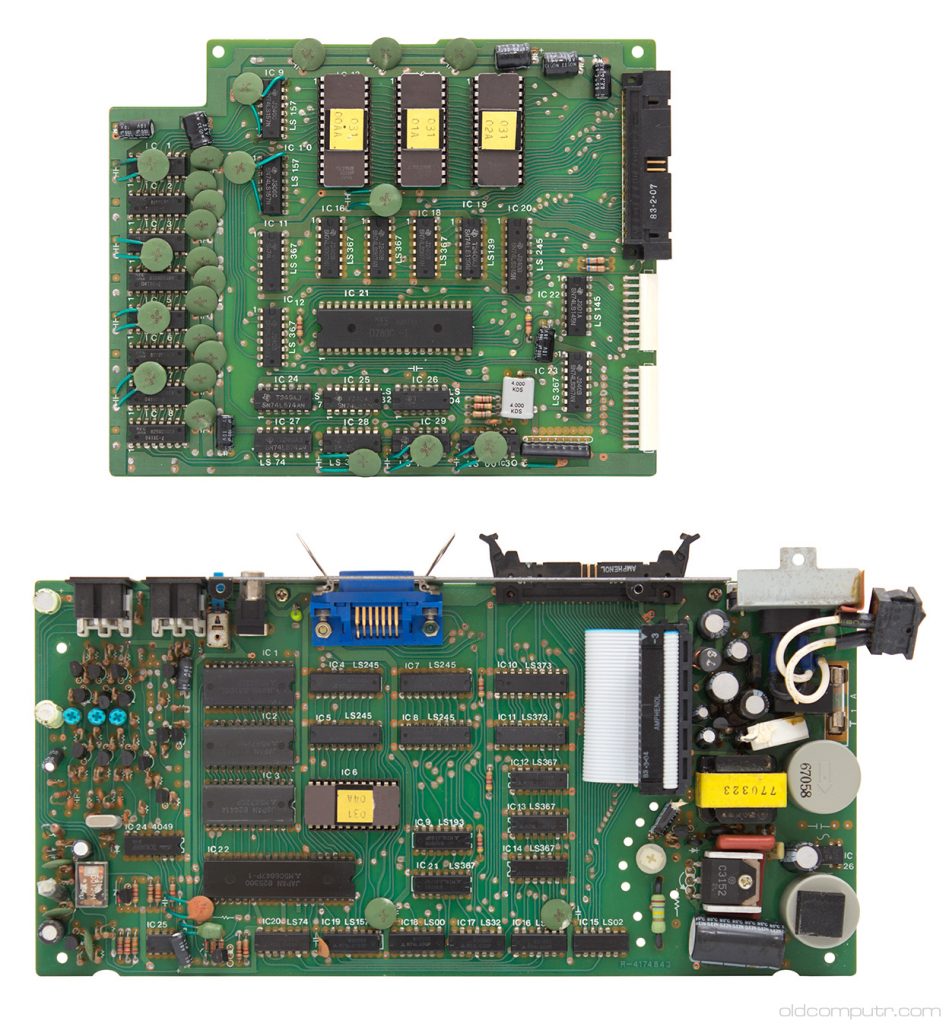
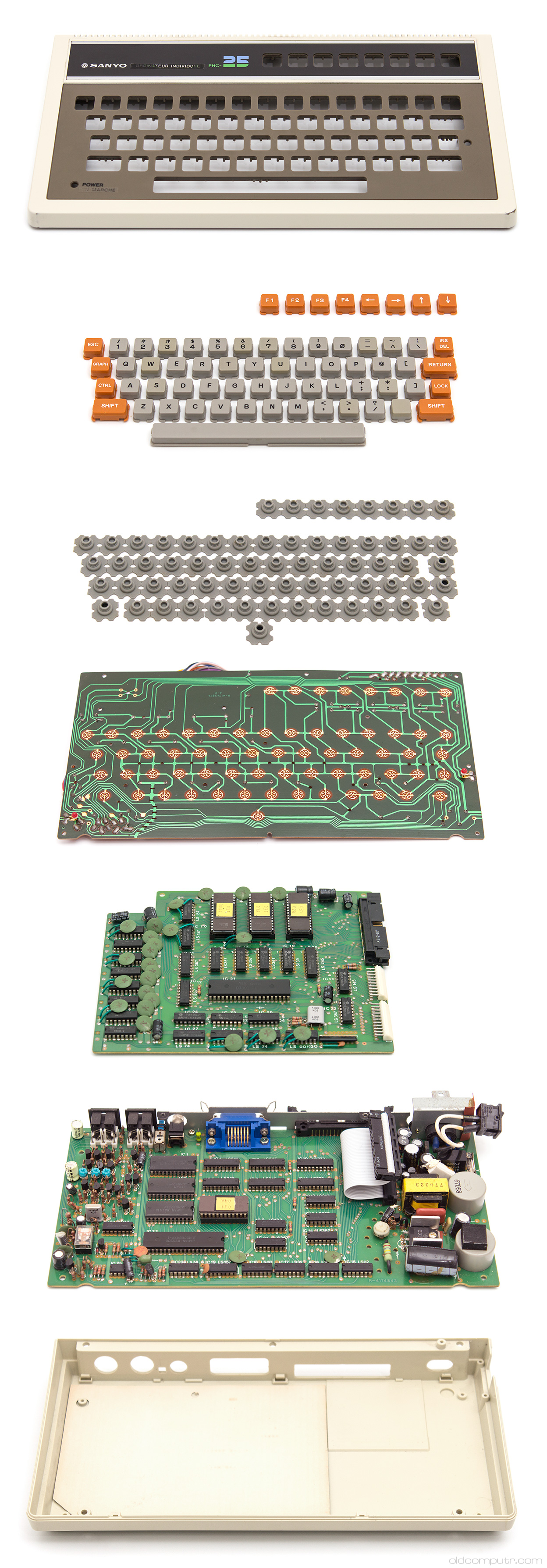
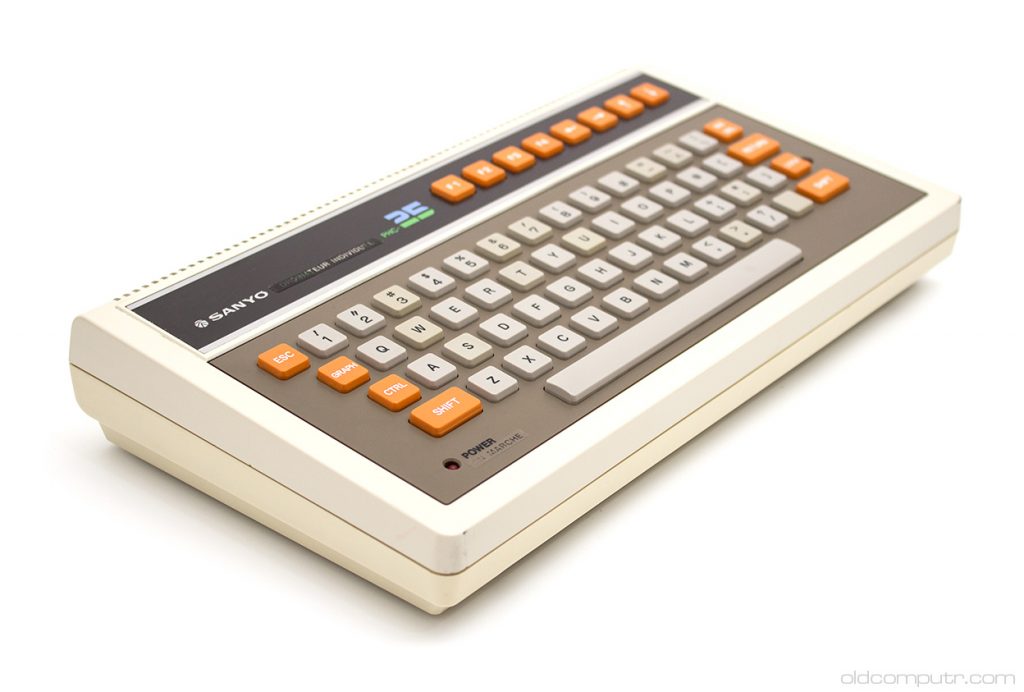
Nice integrated power supply there.
Have you considered sharing one of your photos for the Wikipedia article?
It would be great if the wikipedia page also had a link to your page (in the references section) so that people can see the full teardown!
Myself editing a Wikipedia article to add an external link to my page is considered conflict of interest by Wikipedia…
Would be good to get really high resolution photos of motherboards from top down angle and also bottom up angle. Would like to design a schematic.
Pingback: Sanyo PHC-25 – Mundocaos